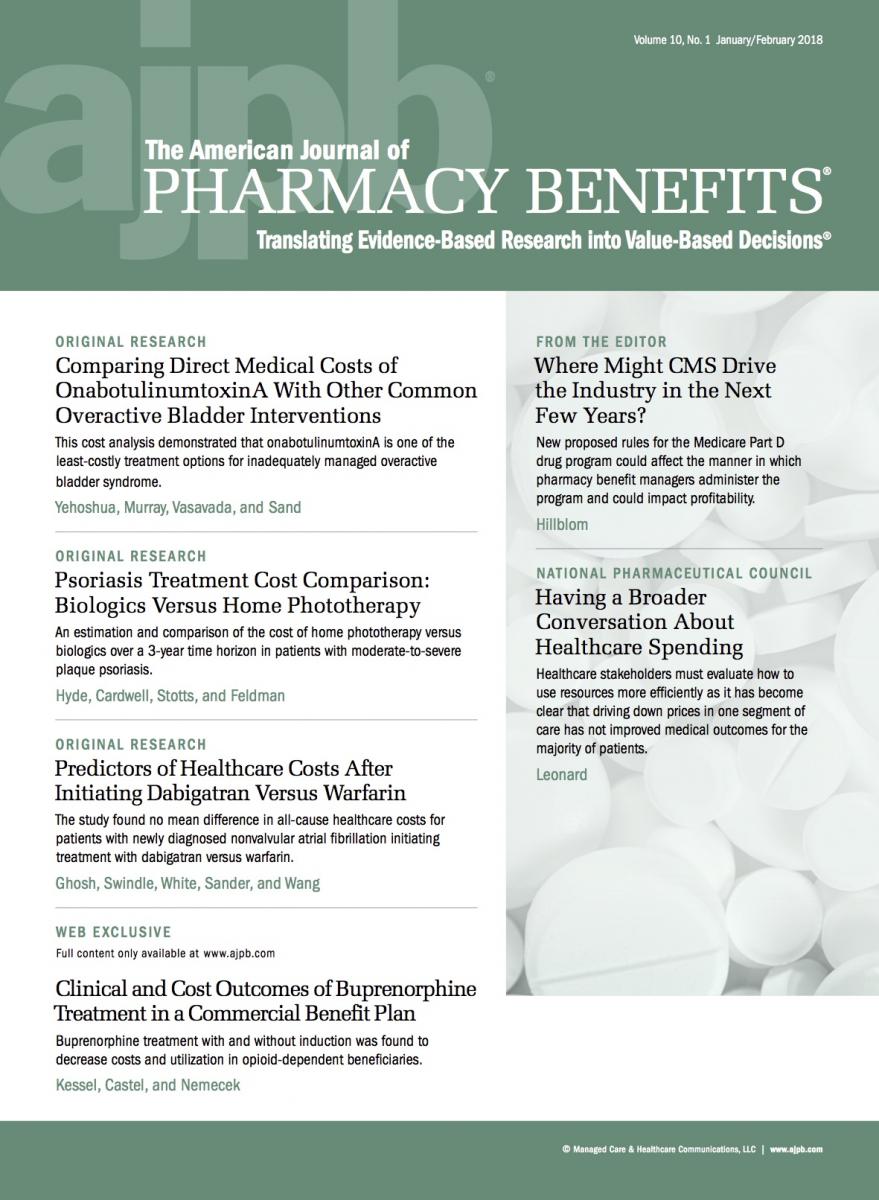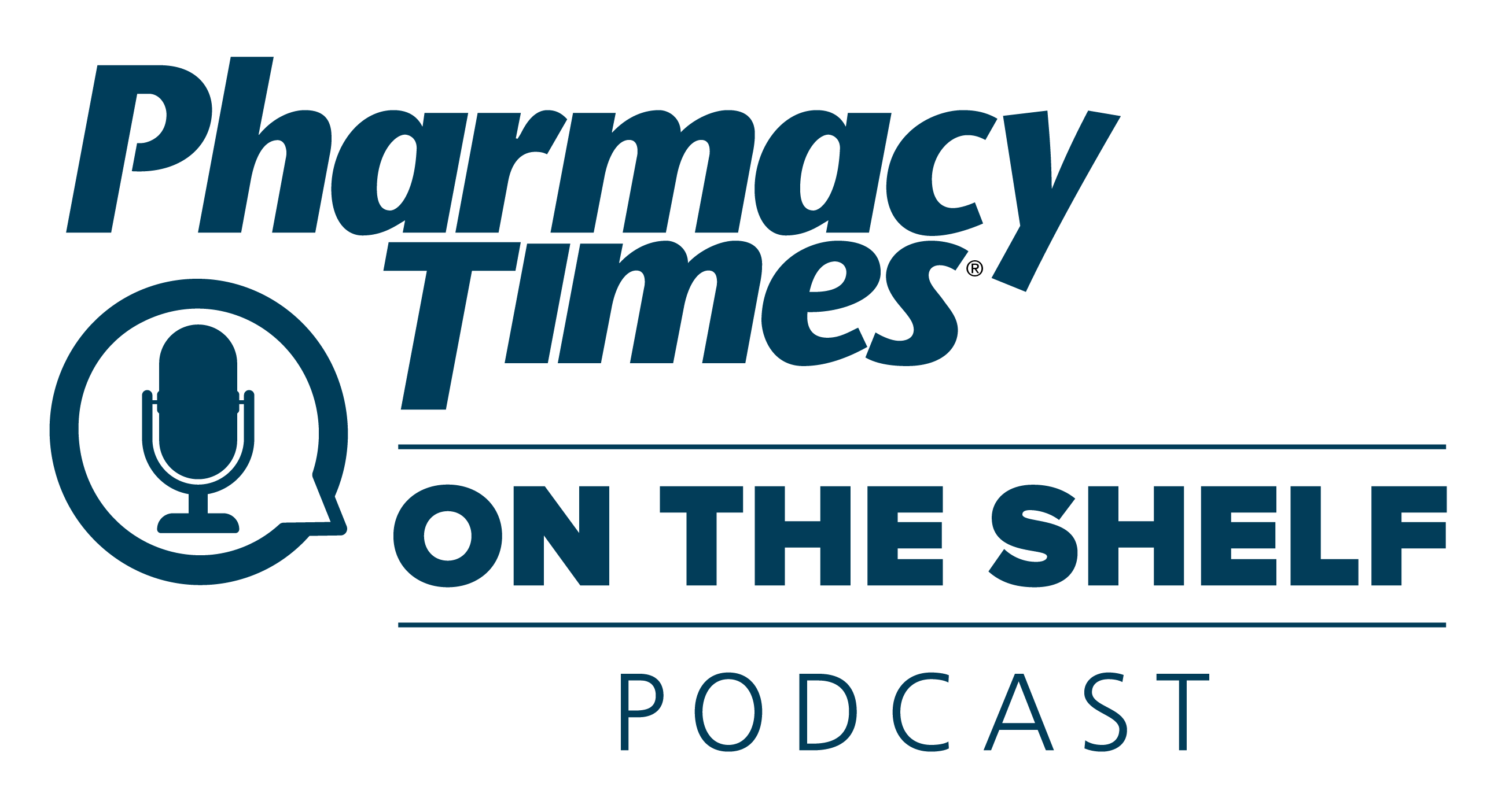Publication
Article
AJPB® Translating Evidence-Based Research Into Value-Based Decisions®
Psoriasis Treatment Cost Comparison: Biologics Versus Home Phototherapy
Author(s):
An estimation and comparison of the cost of home phototherapy versus biologics over a 3-year time horizon in patients with moderate-to-severe plaque psoriasis.
Abstract
Background: Psoriasis is a chronic inflammatory condition associated with considerable morbidity and economic burden.
Objectives: To estimate and compare the costs of home phototherapy versus biologics over a 3-year time horizon in patients with moderate to severe plaque psoriasis.
Methods: The biologics compared were adalimumab, etanercept, infliximab, ustekinumab, and secukinumab. Average wholesale prices of biologics were obtained through Lexicomp. Home phototherapy costs were estimated by obtaining quotes from phototherapy device manufacturers. Three-year cost horizon, 3-month cost, and cost per success were calculated. To assess cost-effectiveness, Psoriasis Area Severity Index (PASI) 75 rates served as the surrogate for the rate of treatment success. Cost per success represents the cost for 3 months of treatment relative to the percent of patients who achieved PASI 75.
Results: Secukinumab is the most expensive biologic with a 3-year cost of $182,718 compared with a 3-year cost of $5,000 for phototherapy.
Limitations: Studies on the efficacy of home phototherapy tended to have small sample sizes. Larger studies would be useful to improve the generalizability of the data. The cost estimates are an average, which may not accurately represent the costs different insurance companies negotiate. These limitations were considered to have minimal effect on analysis.
Conclusions: The economic burden of psoriasis is substantial. It is important to consider the costs to the healthcare system over a patient’s lifetime when they start biologics or home phototherapy. Phototherapy is an effective and economical option for the treatment of moderate to severe plaque psoriasis.
Am J Pharm Benefits. 2018; 10(1):18-21
Psoriasis is a chronic inflammatory condition associated with considerable morbidity and economic burden. Approximately 7.5 million adults in the United States are affected by this disorder; about 17% have moderate-to-severe disease.1—3 Treatment options for moderate-to-severe psoriasis include phototherapy, oral agents (including cyclosporine or methotrexate), and injectable biologics. Home phototherapy, perhaps the most cost-effective treatment in the long run, is safe and effective, and incurs relatively few costs: those of acquiring the equipment, initially, and of bulb replacement every 3 to 6 years.4 Acquisition of home units is often hindered by qualification protocols defined by each insurance company.5 Even when home units are covered, patients’ co-payment requirements may discourage their use, leading many to choose biologics instead.5
Biologic treatment has revolutionized the care of patients with moderate-to-severe psoriasis but is far more costly, overall, than other treatments. However, patient co-payments for biologics are often significantly less than the start-up costs for home phototherapy.6 The increasing cost to manage psoriasis can largely be attributed to the use of biologics in a relatively small percentage of patients.7 The total economic burden of psoriasis was estimated to be $112 billion in the United States for 2013.8
To assure good stewardship of medical resources, biologics should be used only in patients who need them, and appropriate incentives should guide treatment among the available options. Because of the rapid turnover of patients among insurance providers, a short time horizon may be more appropriate to assess the relative cost-effectiveness of home phototherapy versus biologics. The purpose of this study is to estimate and compare the cost of home phototherapy versus biologics over a 3-year time horizon in patients with moderate-to-severe plaque psoriasis.
Methods
The biologics chosen for this cost analysis were the 5 approved by the US FDA and the European Medicines Agency as of early 2016 for the treatment of moderate-to-severe plaque psoriasis: adalimumab, etanercept, infliximab, ustekinumab, and secukinumab (ixekizumab was approved after the study analyses were completed). Average wholesale price for each biologic was obtained from Lexicomp, and the dosing information reflects the respective manufacturer’s prescribing guide (Table 1).
Cost for home phototherapy was estimated by obtaining quotes from phototherapy device manufacturers listed by the National Psoriasis Foundation. A 6-foot-high panel containing 8 ultraviolet B lamps is the most commonly used product for moderate-to-severe psoriasis. To obtain a conservative estimate, the most expensive home phototherapy device quote was used in the comparison with biologics. The highest quote, which included shipping, set-up, technical support, and a 3-year warranty, was $5000. When considering average treatment for a single person, know that lamps need to be replaced every 3 to 6 years and cost about $1000 in total. Therefore, during a 3-year time horizon, a conservative estimate for home phototherapy is $5000. This value does not include co-payments for office visits or the cost of electricity because these expenses were considered to be nominal relative to the startup cost. Further, office visit costs incurred for patients treated with biologics are similar to those incurred by those treated with home phototherapy, but often include additional necessary monitoring of treatment-related adverse effects.
Severity of psoriatic disease is most commonly estimated in clinical trials by Psoriasis Area Severity Index (PASI). Outcomes used in many clinical trials include PASI 50, 75, or 90, which indicate a 50%, 75%, or 90% reduction in PASI score. To assess cost-effectiveness, we used PASI 75 rates as the surrogate for the rate of treatment success. The outcome of this cost analysis is cost to the health plan over a 3-year time horizon.
Results
For initiation and the first 3 months of treatment, home phototherapy costs $13,224 less than adalimumab, the least expensive biologic (Table 2). Over a 3-year time horizon, the biologics cost up to 36 times more than home phototherapy. Secukinumab, the most recently developed biologic, is the most expensive, with a 3-year cost of $182,718 (Table 3). The costs of etanercept, adalimumab, ustekinumab, and infliximab follow in descending order (Table 3). Infliximab is the least expensive biologic with the highest percentage of patients achieving PASI 75. The cost for 3 months of home phototherapy relative to the percentage of patients who demonstrate clinical improvement, measured by achieving PASI 75, displays higher value-based care than any of the biologics. The incremental cost-effectiveness ratio (ICER) compares the cost expense to benefit ratios of the various treatments that are necessary to reach PASI 75. Home phototherapy has the lowest cost per 1% of effectiveness over 3 years; it is followed by infliximab, which costs $2648 more per 1% increase in efficacy over a 3-year time period (Table 3).
Doses
Initiation dose cost represents the cost for drug initiation by dosing guidelines, as described in Table 1. The maintenance dose total cost is the cost to complete the remainder of 3 months of therapy after initiation dosing has been satisfied. Cost at 3 months represents the sum of the initial dose cost and the maintenance dose total cost for the remaining time period.
Discussion
The FDA approval of biologics in the treatment of moderate-to-severe plaque psoriasis has revolutionized our approach to treating the disease. Our increasing understanding of the pathophysiology of psoriasis has allowed for targeted therapy through the use of biologics. To ensure that these costly drugs are available to patients with recalcitrant disease, it is best to limit their use in patients whose psoriasis is amenable to lower-cost options.7
Home phototherapy for treatment of moderate-to-severe psoriasis is an effective option with increased patient satisfaction and reduced treatment burden relative to outpatient phototherapy.14 A trial of phototherapy had been recommended by the American Academy of Dermatology before the use of biologics.22 Currently, healthcare utilization management programs often discourage patients from trying home phototherapy use despite the obvious benefit demonstrated by the ICER (Table 3). Patients pursuing home phototherapy often face high co-insurance costs for equipment, high up-front costs with uncertainty about reimbursement, coverage rejection, and potentially complicated appeal processes to obtain home phototherapy equipment. Many qualification protocols for a home unit include proof of phototherapy-responsive disease before considering coverage; in that case, patients would need to undergo at least a few sessions of costly (high co-payment at each session) and inconvenient outpatient phototherapy because access to home rental equipment may be limited.23-28 Many patients do not have that capability. These challenges, along with pharmaceutical programs that cover patients’ co-payment costs for biologics, largely discourage patients from seeking home phototherapy.5 From the health plan perspective, delaying biologic use for 3 months with a trial of home phototherapy is significantly more cost-effective than beginning biologics right away, given that a home unit costs $5000 and 3 months of biologic maintenance therapy cost $11,931 on average.
Limitations
Our analysis has several limitations. The efficacy data for home phototherapy are reported from a trial in Denmark, which did not select specifically for patients with moderate-to-severe psoriasis. A subgroup of patients with moderate-to-severe psoriasis responded similarly to the average patient in the study.14 Studies on the efficacy of home phototherapy tended to have small sample sizes. Additional larger studies would be useful to improve the generalizability of the data. The cost/efficacy comparison was based on PASI 75 for each treatment option, but the duration ranged from 10 to 15 weeks rather than an exact 3 months. The cost estimates are an average, which may not accurately represent the costs negotiated by different insurance companies. These limitations, however, were considered to have minimal effect on analysis, as the cost difference to payers for home phototherapy versus biologics is substantial.
Conclusions
The economic burden of psoriasis is substantial. It is important to consider the cost to the health plan over a patient-->







